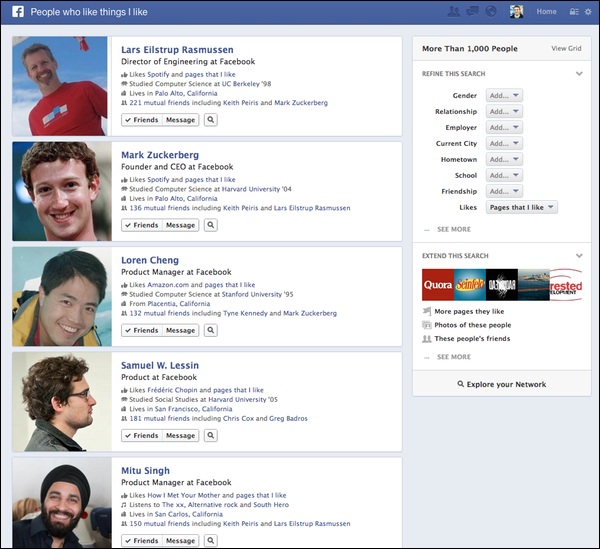Facebook Offers An In-Depth Look At The Natural Language Interface Of Graph Search
Since its launch in January of this year, Facebook has been rolling out their Graph Search, allowing a limited number of users to perform queries with the natural language interface. In a post on their engineering blog today, Facebook explains how their natural language interface works, providing an in-depth look into the mechanics behind it. […]

Designed to perform exact searches across the abundance of data within the Facebook graph, the robust natural language interface recognizes traditional keyword searches and can identify grammatically incorrect queries, while also providing auto-complete options as a user enters search terms or phrases. The natural language interface understands not only keywords, but the grammar rules that may be used to combine them, quickly translating search terms into a programming language that can be understood by Faceobook’s Unicorn index standards.
According to Facebook, the natural language interface offers more precise queries compared to a key-word based system or augmented drop-down filters. The Facebook Graph Search team determined that a keyword-based system would be too limited in its ability to correctly match connections between data. Form-filling augmented drop-down filters were eliminated as well because of the hundreds of filters it would take to search all of Facebook’s data.
The Facebook Graph Search team built the natural language interface to identify common synonyms and related forms by culling extensive lists of words that could be used interchangeably, making it possible for phrases like, “besties from my hood” to return the same results as “my friends from my hometown.” Grammatical rules were also built in to know when slight changes to a word may or may not change its meaning, e.g., changing “work” to “worked” alters the root word’s meaning, while changing “photo” to “photos” does not.
Facebook claims that the natural language interface is the, “…most natural and efficient way of querying the data in Facebook’s graph,” allowing users to perform verbatim queries, with examples like, “TV shows liked by people who study linguistics,” to locate extremely specific results. With the amount of data Facebook collects, their Graph Search is positioned to dramatically alter the way users search the social networking site, and eventually become a formidable competitor within the search industry.
Contributing authors are invited to create content for Search Engine Land and are chosen for their expertise and contribution to the search community. Our contributors work under the oversight of the editorial staff and contributions are checked for quality and relevance to our readers. Search Engine Land is owned by Semrush. Contributor was not asked to make any direct or indirect mentions of Semrush. The opinions they express are their own.



